Art Fairs
Here’s What It’s Like on the Ground in Miami Beach, Where Zombie Art Basel Is Happening, Sort Of
The fairs were cancelled, penthouses languished, and parties got called off. That's when things got interesting.
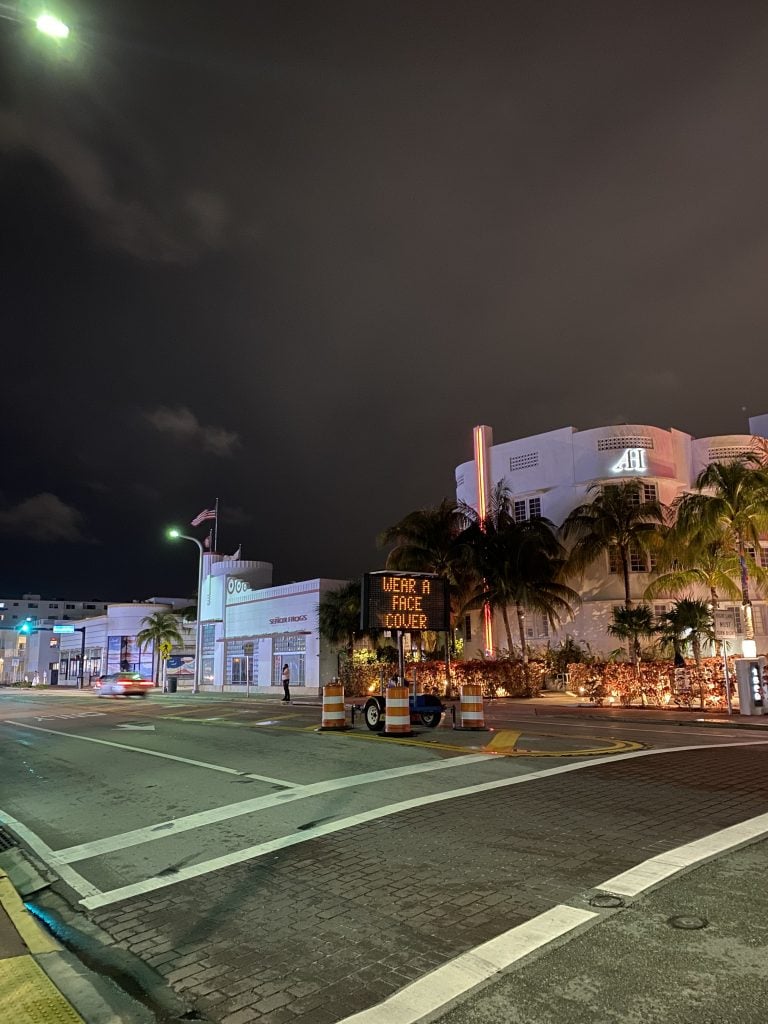
The fairs were cancelled, penthouses languished, and parties got called off. That's when things got interesting.

Nate Freeman

There was no wait for a table of four at prime-hour Joe’s Stone Crab. Collectors and wheeler-dealers usually treat the country’s highest-grossing restaurant as their clubhouse during Art Basel week, gorging on $70 orders of chilled crustacean.
This year, there were no collectors to be found, in either the very open, or in the hastily constructed al fresco tent that springs forth from a parking lot. The actor Cuba Gooding Jr. quietly sipped a martini at a booth.
This is what Miami looks like during Zombie Art Basel. Dealers this year are selling their wares in the cloud, in the extensive Art Basel Miami Beach OVR. Strolling down Collins Avenue on any given night gives one a chill down the spine. There is no one to stop and chat with. The bars closed at midnight, as there’s a curfew in town.
And yet, nature has found a way. A few dealers have ventured from New York, or even from Europe and South America, to sell their wares in person to the snowbird billionaires. There’s outdoor programming, from artist projects in hotel lobbies to abandoned storefronts co-opted as performance spaces. The museums are open, and art-starved locals are happy to stroll through the Perez.
And deals are still happening IRL. With precautions in place, a few adventurous gallerists see this as the first opportunity to revive the art market’s in-person dynamic. As long as they were tested recently, such pioneering dealers were welcomed into the homes and museums of even the more elderly of the region’s esteemed patrons.
On paper, Miami Beach is not to party. But everyone did seem to know about Libbie Mugrabi’s bash at the Faena on Thursday, an exclusive event the ex-wife of collector-king David Mugrabi announced to the 6.5 million subscribers of the New York Times.
“Join us for an evening to celebrate creation, vibration, and liberation,” the invite read. “Dress fucking fabulous.”
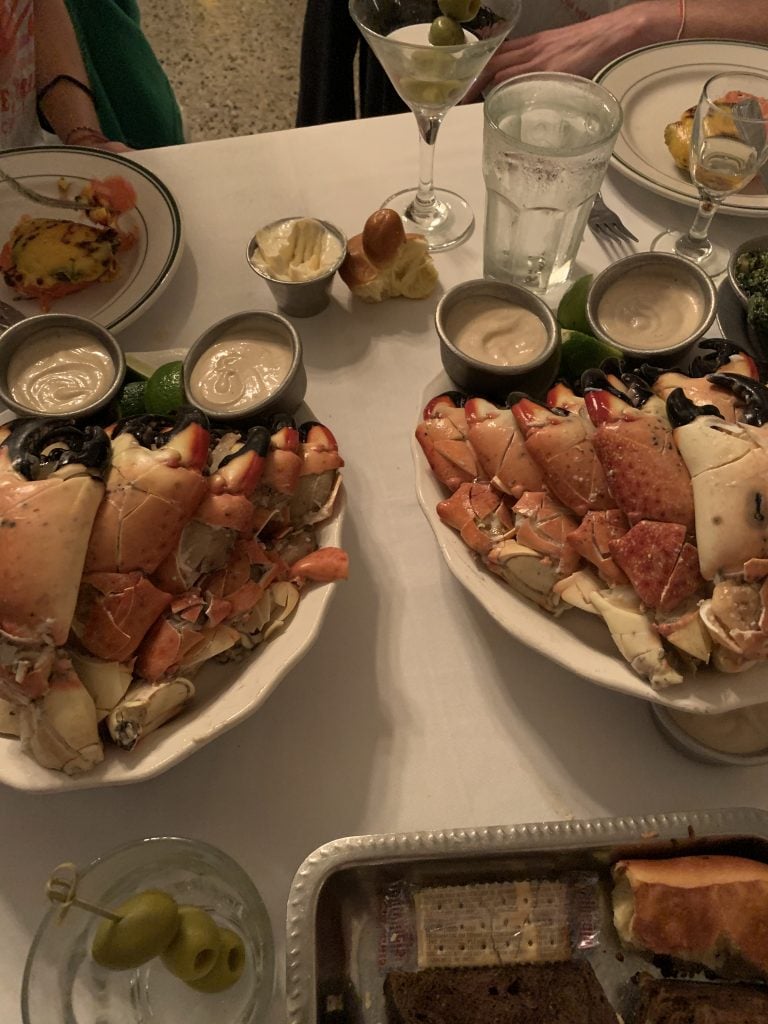
The glory of Joe’s. Photo by Nate Freeman.
Why has anyone gone to Miami?
The CDC advises against any non-essential travel, especially to Miami-Dade County, which is becoming a hotspot once again. On Monday, the start of Miami Art Week, the mayor announced that she and her husband had tested positive. And yet, throughout the week, a very small but not insignificant stream of New York dealers, advisors, and fair organizers made their way to the city.
For many, it came down to this: The best way to sell a lot of paintings is still in person to the people with enough loose funds to buy on sight. After agreeing to launch a pop-up of his gallery Ramiken in the Design District, Mike Egan took the extra precaution of driving down from New York, selling enough paintings via phone during the journey to be in the black by the time he hit the first causeway.
But there were plenty of paintings left, and walk-in collectors to buy them. Drawings by Jean Katambayi Mukendi, an artist from the Democratic Republic of the Congo, were on sale for $5,000, and Egan has sold 12 of them in person.
“Every day, I’m shocked at the number of people who have come by,” said Egan, walking through the space, which features work by Ramiken artists such as Andra Ursuta. “I have a collector in Palm Beach who hasn’t been out of the house since February, and she’s coming down.”
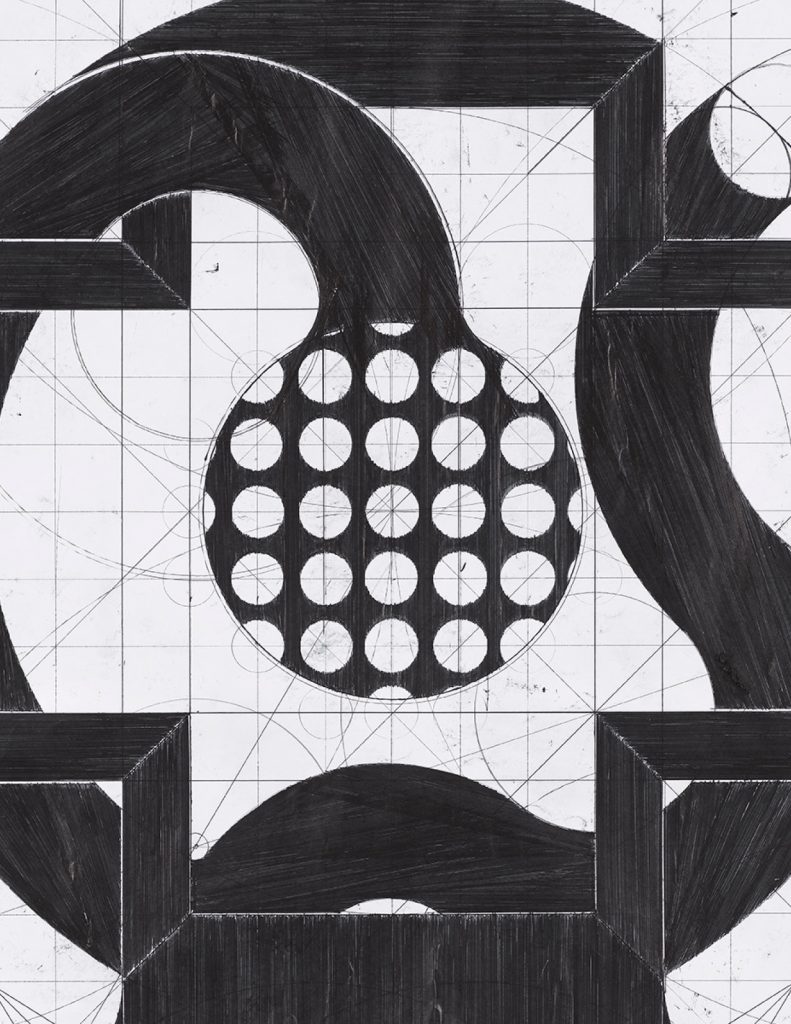
A drawing by Jean Katambayi Mukendi. Photo courtesy Ramiken.
Many of the galleries inhabited abandoned high-end retails stores, and the discount that Design Miami founder Craig Robins was giving them as landlord was steep.
“I’ve never been in this kind of retail environment,” Egan said. “My gallery is usually next to some kind of a trash dump.”
But it’s a seamless fit for Chelsea and Upper East Side stalwarts. At Levy Gorvy’s pop-up with Salon 94 in a former Marni store, an Andy Warhol image of Dolly Parton is installed where fancy handbags would have been. There are Calders in the changing rooms.
Mitchell-Innes & Nash transformed the husk of a Joseph store into a full-on white cube, albeit with a dramatic black spiral staircase leading viewers to a second floor stuffed with high-wattage canvases. Director Josephine Nash has relocated to South Beach for the rest of the year, because the collectors are here.
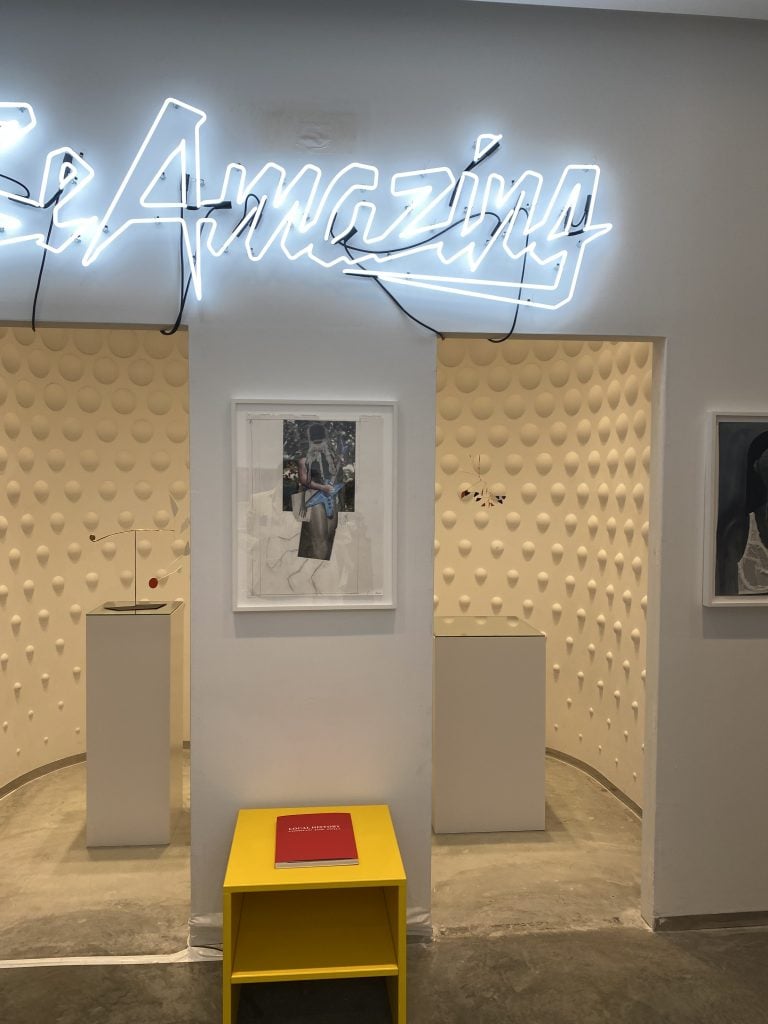
Calders in the dressing room. Photo by Nate Freeman.
Robins lured in the constellation of galleries, but like all buyers of buildings, he has been hit hard by lockdowns—hence the vacant storefronts—and he’s hoping a pop-up gallery circuit will bring buzz back to the city’s toniest nabe.
It helps that he’s also a major collector, with ties to many of the world’s biggest dealers, many of whom are loyal to Craig.
Jeffrey Deitch, who’s staged exhibitions in the Design District every year since 2002 (excepting the years he was director of MOCA), is back with a Kenny Scharf show in a storefront once occupied by a fashion boutique called ODDS.
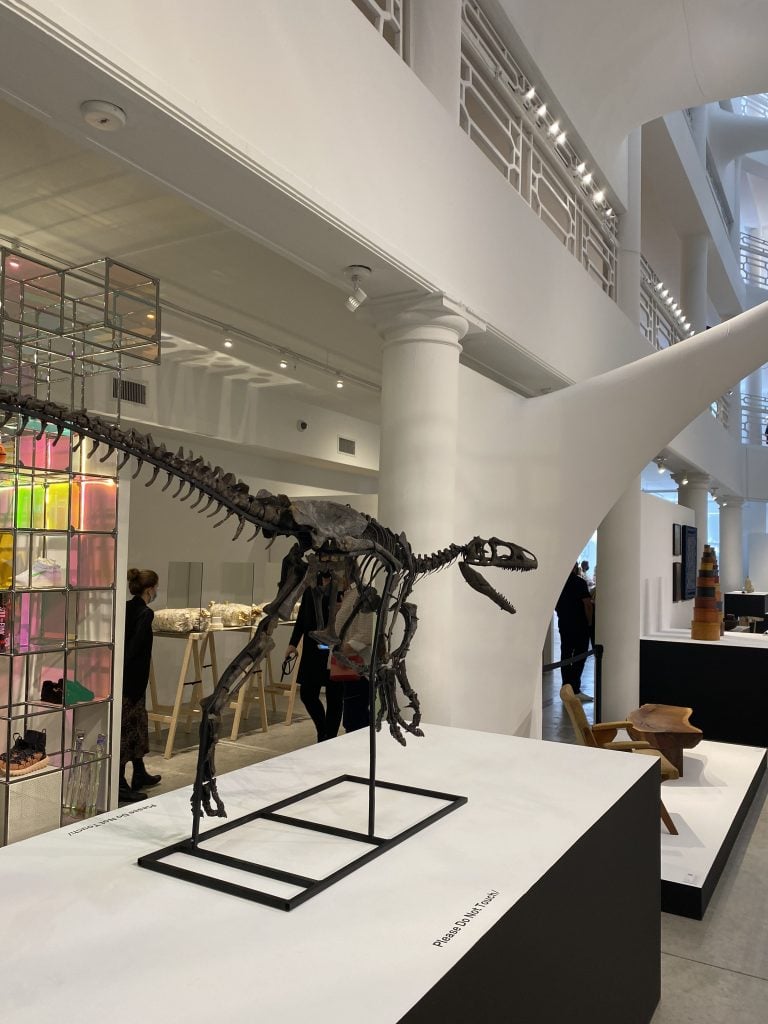
A dino! Photo by Nate Freeman.
Deitch usually stages a show with Larry Gagosian at the Moore Building. But this year, the historic Design District citadel hosted a very scaled-back version of Design Miami, for many the first indoor art fair they’d attended since March.
But while most fair attendees appeared to be locals, several dealers were lured to Miami by fair organizers who promised that airy, expansive spaces would be ideal places to dip a toe back into the water.
For Upper East Side gallery Jason Jacques, it was a chance to hop on the dino-bones-as-expensive-art train and offer two big skeletons for seven figures, easily the most expensive items on view. (A rep for the gallery said they hoped to sell to an institution but were still waiting for interest.)
And art advisor Rachel Barrett saw Design Miami as a way to trial-run her foray into bringing an audience to the under-appreciated world of Caribbean Art Deco furniture. She brought works from her own collection and built a booth that resembles a classic house in Kingston, Jamaica, showing the uninitiated gorgeous hand-caned wooden pieces.

The booth of Caribbean Modern: Jamaica 1920–1980 at Design Miami. Photo by Nate Freeman.
“In September, Design Miami really kicked me in the pants to do it, and I realized I could bring everything up here from Jamaica,” Barrett said.
She’s also working on publishing some of the first catalogs on the subject, noting that the market for Jamaican design objects died after the Georgian period, ignoring a whole century of gems.
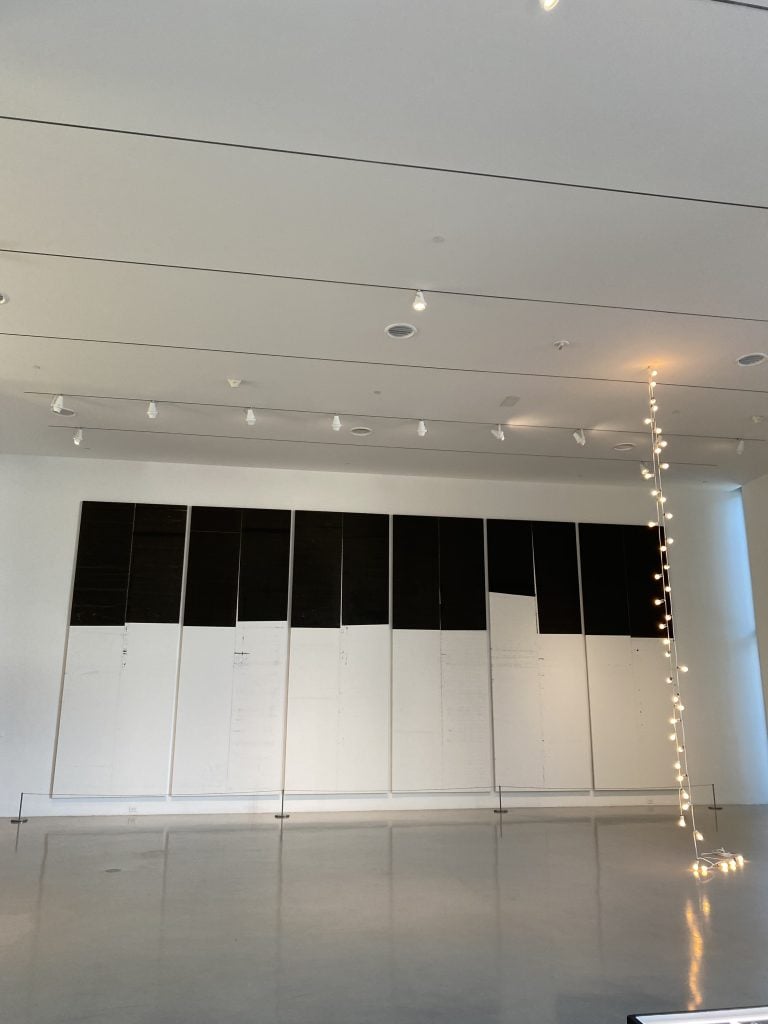
What a sight: Wade Guyton and Felix Gonzalez-Torres at the de la Cruz collection. Photo by Nate Freeman.
Down the street, appointments to visit the ICA Miami were booked up for Friday and Saturday, and at the de la Cruz collection, a spirited Rosa de la Cruz, getting by with a walker, showed off her new purchases, including a magnificent 2020 painting by Christina Quarles that was installed in a small room alongside some of her most prized pieces, including Peter Doig landscapes and Alex Katz portraits.
De la Cruz, who with her husband, Carlos, has built one of the most significant contemporary collections in the city, nixed the big lunches she usually throws this week. But despite her age, she wasn’t about to stay in the back room.
“Alex Katz, he’s in his 90s, and he’s at the top of his game,” de la Cruz said. “And I appreciate that more and more, as I’m getting up in my years.”
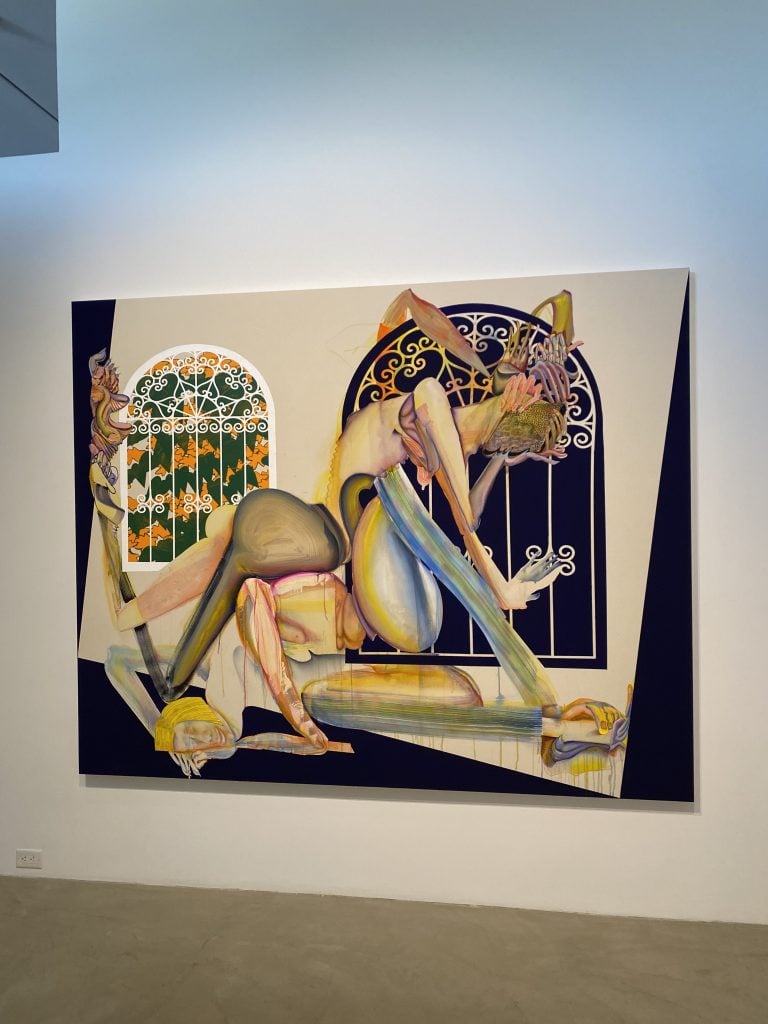
A new painting by Christina Quarles in the de la Cruz Collection. Photo by Nate Freeman.
There were certainly fewer people in the galleries. Walking to the Margulies Collection gave the surreal impression of Wynwood as Pompeii, a long-abandoned culture with a curious obsession with street art that was suddenly frozen in time.
Even more vertigo-inducing was the experience of taking in the gigantic Anselm Kiefer sculptures at the Margulies without another soul in sight. The gigantic funeral pyre of abandoned canvases always invoked death, but now they invoked the rising death count.
Suddenly, Martin Margulies himself arrived to jolt things back to reality.
“You really are quite courageous to come down here,” said Margulies, the mega-collector who has more than 4,000 works.
Asked how this Miami Art Week is different from most, Margulies smiled. “Last year, we had a record number of attendees, with 6,000 people coming, and this year I think we’re gonna hit seven,” he said.
He started counting on his fingers.
“We’ve had six people come in so far, and I think you’re the seventh,” he said.
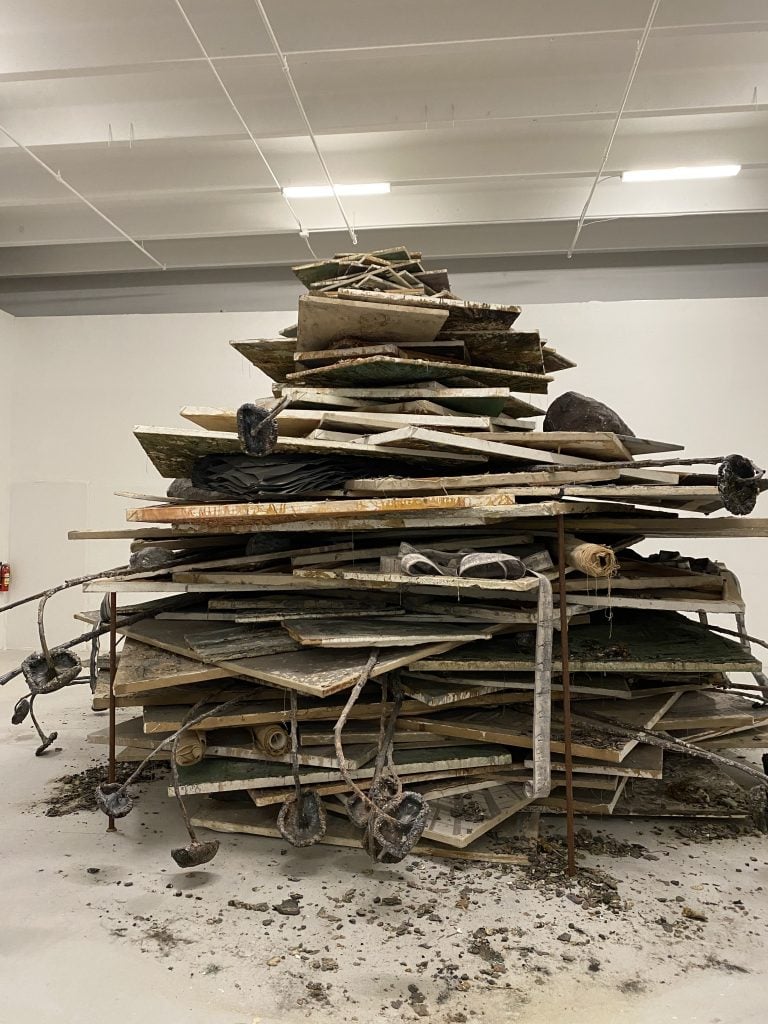
Anselm Kiefer, Die Erdzeitalter (Ages Of The World) (2014) at the Margulies Collection. Photo by Nate Freeman.
Still, the City of Miami Beach rolled out the red carpet with a spree of programs. Most significant was No Vacancy, a city-funded project that gave 10 artists $10,000 each to bring to life a project at 10 South Beach hotels, all of which have been hit very hard by drops in tourism.
“Miami Beach is known internationally as a destination to experience contemporary public art,” Miami Beach mayor Dan Gelber said in a statement. “No Vacancy pushes the boundaries of traditional gallery spaces and invites our residents and visitors to encounter art in our unique hotel properties in a safe setting.”
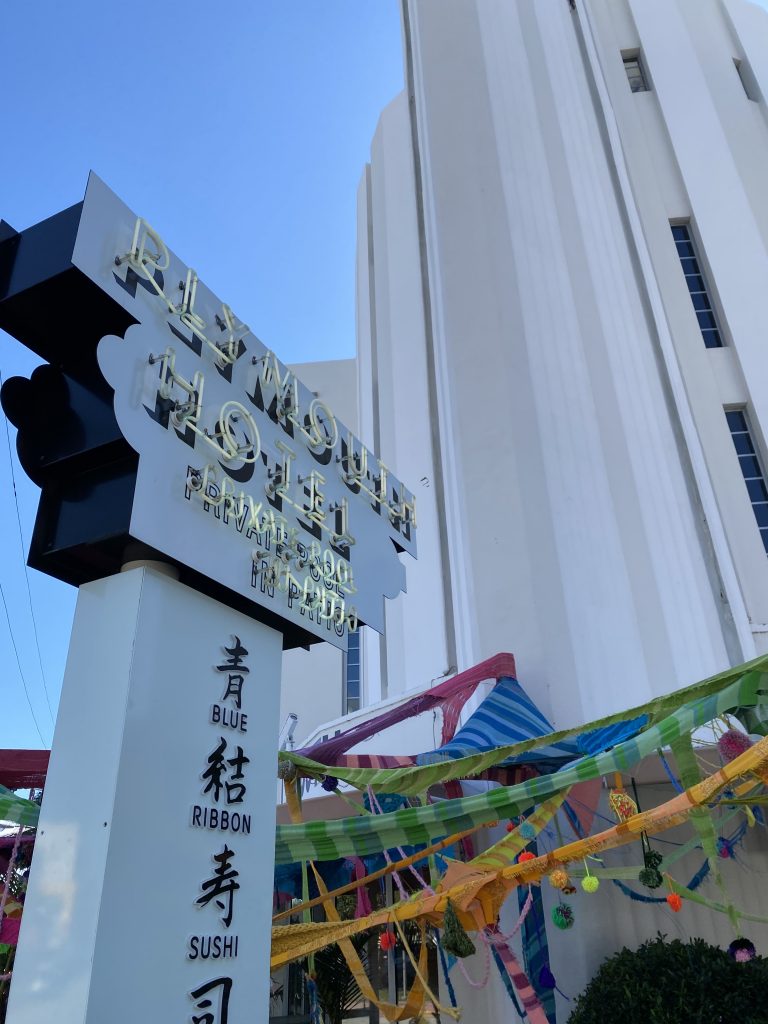
The No Vacancy program took over a number of Miami Beach hotels. Photo by Nate Freeman.
A cluster of the No Vacancy hotels sit right by the now-empty convention center, and I got a tour from Brandi Reddick, the cultural affairs manager for the city’s tourism and culture department, and her colleague, Joshua Carden, the coordinator of the Art in Public Places program.
The works not only give artists exposure at a time when so many exhibitions are cancelled, there’s a chance to get some serious cash: the artist who wins the public vote receives a $5,000 prize, and another artist chosen by a jury of the city’s art-world luminaries gets another $20,0000.
“This wasn’t actually supposed to happen during Miami Art Week—it was supposed to be during a less busy time, to bring attention to hotels with low occupancy,” Reddick said. “Now this is a less busy time.”
We were walking up to the Riviera Hotel South Beach, a charming set of bungalows that’s long been a fairgoer haunt, considering its proximity to the convention center. (Apparently, it’s Joseph Kosuth’s favorite place to stay, and the man has discerning tastes.)
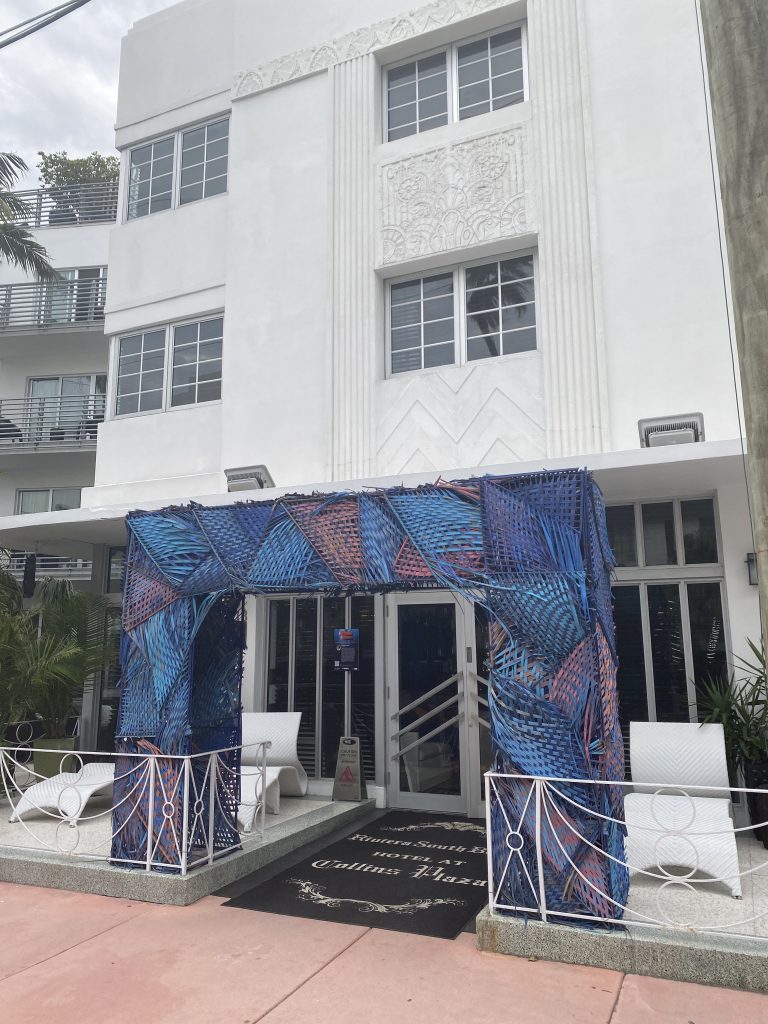
A work by Sterling Rook at the Riviera Hotel South Beach. Photo by Nate Freeman.
We walked up to a sculpture by local artist Sterling Rook, who has work all over the city, it seems like. Rook designed a blue-hued arch above the entry to the hotel, ensuring that anyone around would get a glimpse of the installation.
Karelle Levy festooned the deck of the Plymouth Hotel Miami, and down Collins Avenue, Anna Kell took strips of mattresses to create wall installations depicting sleeping couples and had them installed outside of the Catalina Hotel and Beach Club.
At the Lennox Hotel Miami Beach, the French collective Scenocosme installed a bizarre set of hanging plants that, when brushed upon gently, emitted a yelping sound. Reddick said she thought it could win the jury prize.
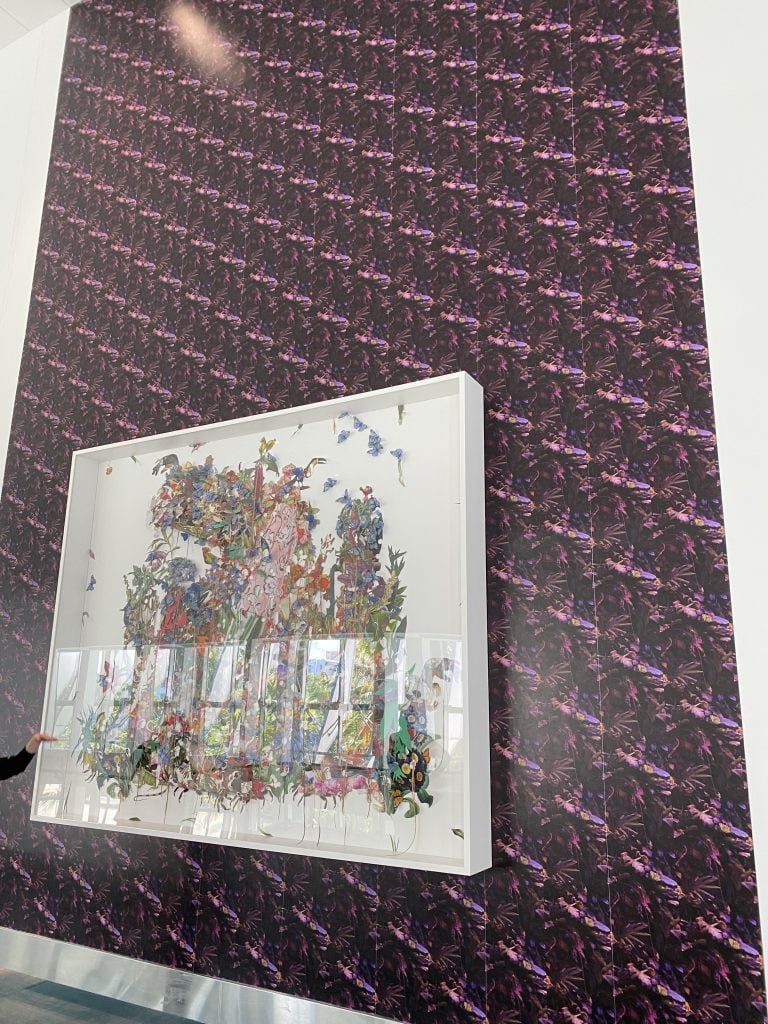
Ebony G. Patterson’s work installed in the Miami Beach Convention Center. Photo by Nate Freeman.
After the tour, Reddick and Carden suggested we check out the convention center, less as a rite of passage—it was Wednesday morning, which would have been the ultra-starry VIP opening of Art Basel Miami Beach—but to see a work by Ebony G. Patterson that the Art in Public Places department bought from Monique Meloche last year for $65,000.
It was a massive installation set against one of her custom wallpaper designs, and is the first of many the convention center hopes to place along the second floor of the massive space.
One got the impression that very few people had seen the interior of the convention center in many months. Standing in front of the work, looking down into the belly of its vestibule, the space seemed more enormous without people, a convention center where no one can convene.
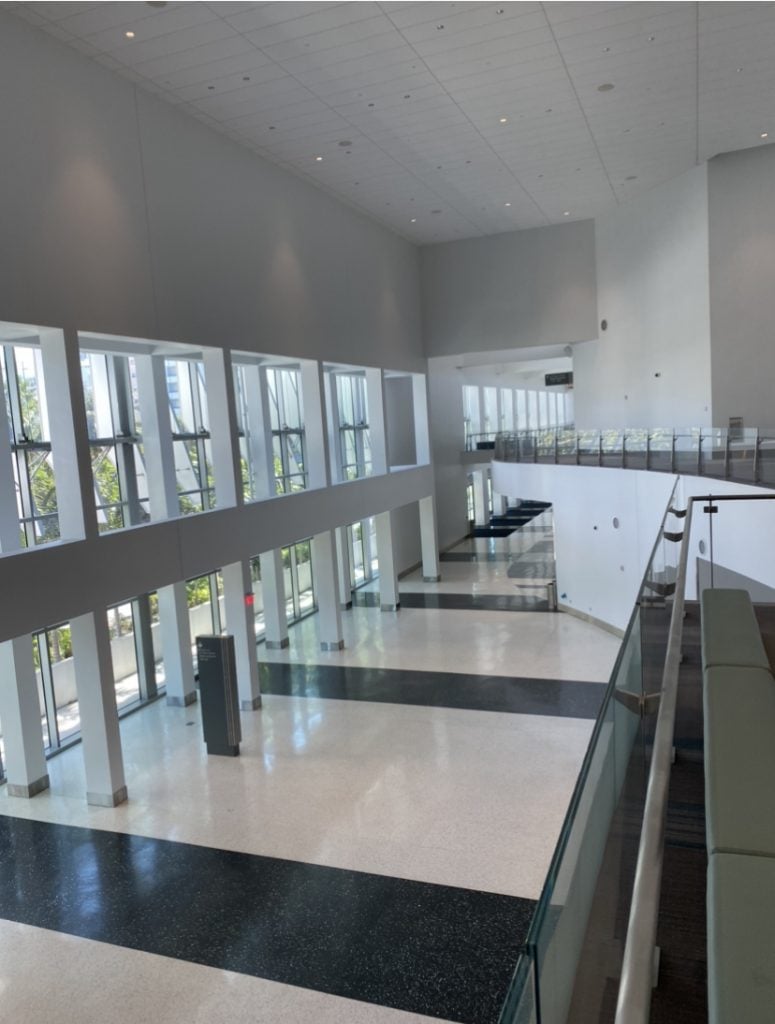
An empty convention center. Photo by Nate Freeman.
The Faena was not part of the No Vacancy project, but it hosted a party Thursday night that was nothing if not a work of performance art.
The hotel’s public spaces are already a Miami Vice fever dream, a cream-colored undulation of leopard-print couches. There are snakeskin cowboy hats and fur coats of animals that might not be legal. When a friend texted an LA resident a picture of the decor in the Faena bar, the friend responded, simply: “Cocaine.”
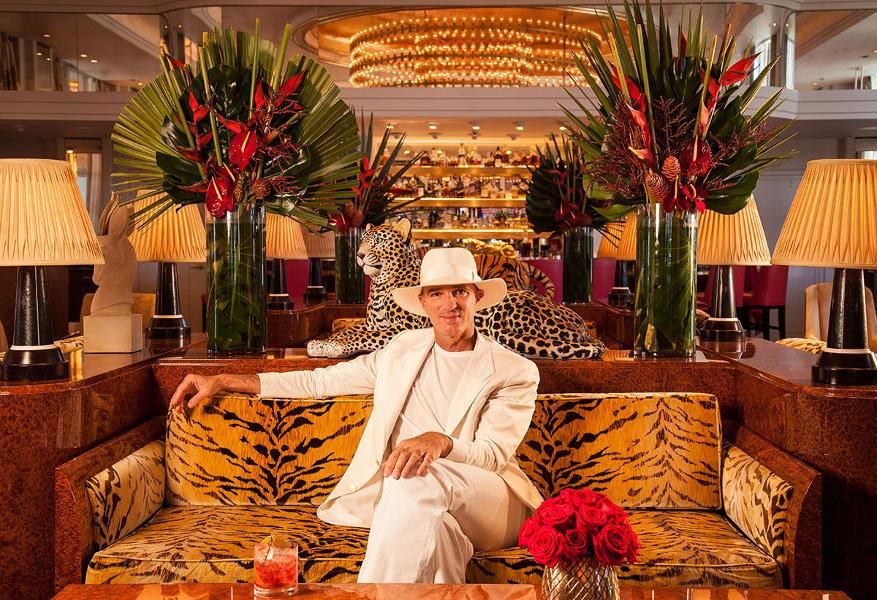
Alan Faena and what it looks like inside his mind. Photo courtesy Faena.
Libbie Mugrabi’s party, in a Faena restaurant called Pao, bottled this energy, shook it up, and popped the cork. It was a spite dinner thrown by an ex-wife of a powerful collector during a time when few collectors were around—a party as a gesture.
Mask-on waiters circulated cans of something called Beach Juice and little tuna ceviche bites. Attendees often did not wear masks, and Mugrabi at one point climbed onto a Damien Hirst sculpture in the middle of the room.
The DJ spun behind a booth emblazoned with the words “Healing Is Not Linear,” with a graph line that resembled one measuring case counts. There were hats emblazoned with slogans such as “LIBBIE LOVE,” “ICON,” and “GASLIGHTED.” It went until midnight, when the curfew went into effect.